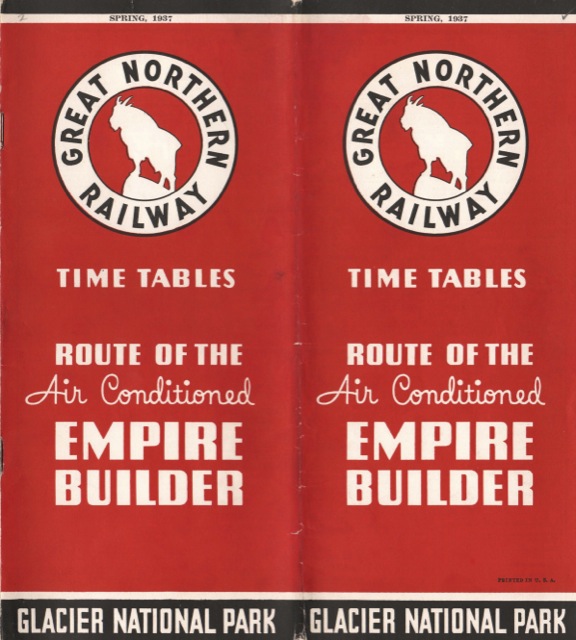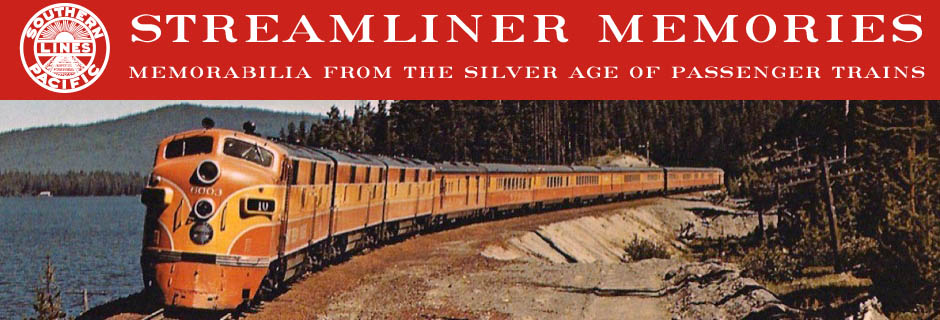When the Empire Builder replaced the Oriental Limited as Great Northern’s premiere train in 1929, the latter name replaced the Glacier Park Limited for the secondary train. But with the Depression, business dropped off so much that GN was forced to drop its secondary train, leaving the Empire Builder as its only full-service train between the Midwest and Pacific Northwest. Trains 3 & 4, formerly named the Oriental Limited, continued to operate as a local from St. Paul to Williston, ND.

Click image to download a 27.9-MB PDF of this 36-page timetable.
But the GN did have a secondary transcontinental train: the Fast Mail, trains 27 & 28. However, this train was coach-only from St. Paul to Spokane. Perhaps because the Empire Builder departed Wenatchee at 2:30 am while the Fast Mail left at a more respectable 11 pm, GN felt it was important to add a Pullman sleeper at Wenatchee, and similarly provided one from Seattle to Wenatchee eastbound. The schedule seems to indicate there were no passenger cars at all on the Fast Mail between Wenatchee and Spokane.
Unlike the pre-Depression trains 3 & 4, which operated about twelve hours apart from trains 1 & 2, the Fast Mail left St. Paul just five minutes before the Empire Builder. Because the Fast Mail took the Surrey Cutoff through New Rockford, ND, while the Empire Builder took the longer route through Grand Forks, train 27 managed to arrive in Seattle three hours before train 1. The Fast Mail didn’t do so well eastbound: it left Seattle five minutes after the Empire Builder, somehow lost four hours by the time it left Spokane, another two hours at Whitefish, and arrived in St. Paul a total of eight hours behind the Builder.
There are other local trains on the main line, but nowhere near the complete coverage provided in 1928. One new train is number 5 & 6, the Seattle-Spokane Cascadian. The Seattle-Portland pool trains are down to four a day from five in 1928; Seattle-Vancouver is down to twice a day from three times in 1928.
Enough people traveled to Asia for GN to devote two whole pages to steamship schedules and fares. The first-class fares quoted in the 1928 timetable have come down and now are accompanied by tourist-class fares. The lowest one-way fare from Seattle to Yokohama is $130, which still makes a round trip about $3,500 in today’s money.
Page 30 has a half-page ad from the American Railroad Association bragging about taxes paid and dollars invested. For some reason, it also says, “A passenger locomotive uses from 70 to 120 gallons of water per mile.” Since the P2 and S2 locomotives that pulled the Empire Builder had water capacities of 12,000 to 17,000 gallons, they could only go (at 100 gallons per mile) about 120 to 170 gallons between water stops. That explains why the railroads switched so rapidly to Diesels and why Diesel-powered trains were so much faster than steam–they didn’t have to stop for water as often.
